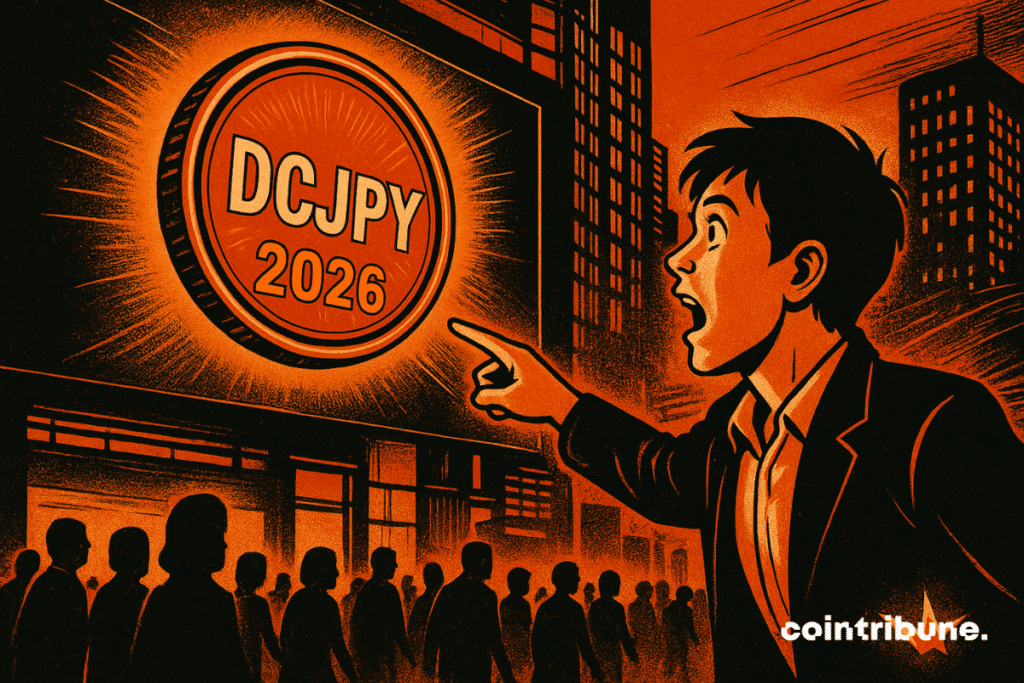Japan Post Bank to Launch Tokenized Asset Network with DCJPY by 2026 - Here’s Why It’s a Game-Changer
Japan's $2 trillion postal savings giant jumps into digital assets—traditional finance won't know what hit it.
The DCJPY Infrastructure Play
Japan Post Bank isn't just dipping toes—it's building the plumbing for tokenized everything. By 2026, expect real estate, commodities, and even corporate bonds to trade on-chain. The move leverages their massive retail network while bypassing legacy settlement systems entirely.
Why 2026 Matters
The timeline puts them ahead of European and US counterparts still stuck in regulatory sandboxes. Japan's FSA clearly green-lit this—because nothing says innovation like a government-backed bank cutting out middlemen while creating new ones.
Tokenization meets tradition—where centuries-old institutions finally realize blockchain isn't just for crypto anarchists. Though watching postal bankers explain gas fees might be worth the admission alone.

In Brief
- Japan Post Bank plans to introduce tokenized deposits via the DCJPY network in fiscal year 2026.
- Over 120M account holders could convert savings into blockchain-based tokens for digital securities.
- Faster settlements aim to cut costs, reducing multi-day bond settlement to near-instant transactions.
- Regulators prepare for Japan’s first stablecoin launch and consider tax reforms for crypto ETFs.
DCJPY Network to Offer Tokenized Asset Deposits
If achieved, this WOULD allow the bank’s over 120 million account holders to convert their savings into tokenized deposits, enabling more efficient securities transactions. As reported by Nikkei, Japan Post Bank, which currently holds about ¥190 trillion ($1.29 trillion) in assets under management (AUM), will integrate with the DCJPY network.
The network is developed by DeCurret DCP, a Japanese financial firm backed by industry heavyweights such as MUFG (Japan’s largest financial institution). Launched just last year, DCJPY issues a token pegged 1:1 to the yen and redeemable by partner institutions.
Managing one of the biggest asset bases in the world—larger than JPMorgan Chase’s US deposit holdings—Japan Post Bank commands a solid investment foundation to experiment with digital currency infrastructure.
Near-Instant Blockchain Settlement Could Save Billions in Annual Expenses
As part of the proposed rollout, customers will be able to convert their cash investments into DCJPY tokens. The report noted that these tokens can then be used to acquire tokenized securities targeting returns of 3% to 5%. To attract a younger user base, settlement time will be reduced from several days to near-instant transactions.
Settlement for traditional corporate bonds and securities transactions in Japan usually takes two or more business days after a trade. Analysts note that faster settlement could save the bank billions of yen annually in operating costs.
Regulators Eye Stablecoins as Banks Experiment with DCJPY
For now, GMO Aozora Net Bank remains the only bank allowed to mint the DCJPY token, although several proof-of-concept tests have already been conducted. The DCJPY model offers a different use case from stablecoins, as it runs on a permissioned blockchain and functions as direct bank deposits.
Meanwhile, regulators are preparing to approve Japan’s first yen-denominated stablecoin this fall. Tokyo-based JPYC will issue the fiat-backed asset under domestic oversight. Lawmakers are also considering tax reforms aimed at boosting cryptocurrency trading and laying the groundwork for exchange-traded funds (ETFs).
Maximize your Cointribune experience with our "Read to Earn" program! For every article you read, earn points and access exclusive rewards. Sign up now and start earning benefits.

